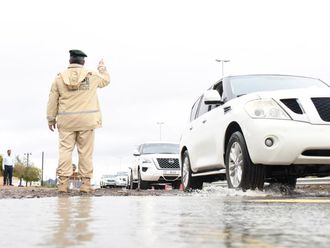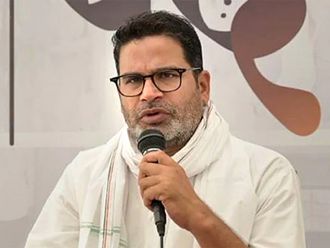Technology moves fast, very fast. Too fast for me most of the time. Just when I think I’m getting on top of my email inbox or making headway organising the thousands of photos on my desktop, I get distracted by an email I have to read immediately or a breaking news story I can’t resist.
And then there is the more fundamental issue of how quickly technology changes. Blink and there’s a new app — or six — promising to help you deal with kids’ art, minimise junk email, organise photos, keep a to-do list. It’s all daunting, unless you’re 18.
I spoke with Deb Lee, a digital business coach and productivity consultant, to find out which tools she relies on to stay organised, as well as her tips for managing digital clutter and for using technology to increase productivity.
Lee explained that digital clutter is similar to physical clutter. If we don’t use our devices effectively, everything we’re gaining in convenience is outweighed by the frustration and anxiety it causes, not to mention the lost time. Lee advises clients to use technology strategically, which requires finding the proper tools, setting boundaries and scheduling regular maintenance.
n The proper tools
Think about how you work and how projects move from inception to completion. Ask yourself these questions: Where do you run into problems with your work, i.e., do you miss deadlines, spend too much time looking for documents or emails, or have a hard time prioritising your tasks? Do tasks take more time than they should? What would you like to spend more or less time doing?
Only after you’ve identified problem areas is it possible to map out a solution and find the best tools to help you be more productive. In other words, don’t keep downloading apps just because friends recommend them or because they might be useful in solving a problem you haven’t yet identified.
n To-do lists and calendars
If you struggle with missing deadlines or forgetting tasks, Lee recommends apps such as Evernote or Any.do for taking notes and keeping lists. Evernote is popular because of features such as the Web Clipper, searching for text in images and business-card scanning. Lee likes Any.do for its to-do list, as well as its collaborative and reminder features. Google Keep is also popular, though more simplistic. Each of these apps is available across platforms and has free and paid options.
n Inbox
This is one of the challenges I hear about most often from clients and one I struggle with myself. Fortunately, Lee says, it’s OK to give up on the concept of having zero emails in your inbox at the end of the day, because it’s difficult to make the transition and it requires a lot of time to achieve. Instead, she recommends focusing on decreasing junk email and organising emails that you want to keep.
Many people have no idea that apps can help manage their inboxes. Astro gets high marks for its email and calendar functions but works only with Gmail and Microsoft’s Office 365. The Gmail app is also well regarded if you use Google services, and the Outlook app can sort and show only the most important emails from those you interact with most often, keeping them separate from bulk emails.
Washington Consumers’ Checkbook recently recommended a free app called Unroll. Me to decrease junk email. It shows your email subscriptions, and you choose what to do with each — unsubscribe, keep or receive a “Rollup” digest in a daily summary. Be diligent about not signing up for too many lists, and unsubscribe from unwanted lists as soon as the first email arrives.
Accurately and consistently name and file documents you receive via email. Using dates and detailed descriptions for file names will allow you to retrieve the files quickly and help you avoid having to re-create or duplicate documents later. Lee recommends scheduling time in the morning and at night to review and respond to emails. If you’re constantly moving between a work document, your personal inbox, incoming texts and phone calls, you’re wasting energy and pressuring your brain to refocus on each new task.
n Digital estate
Make sure loved ones know how to access what Lee calls your “digital estate.” Much of our personal information and finances are increasingly online, and if you die unexpectedly, someone needs to know how to access your computer, your phone and any other devices where you access banking, credit card information, investment statements, tax returns, photos — all of it. Keeping track of passwords and knowing your login information will save time, but it is imperative that someone close to you knows how to access your digital files, too. Either write down all of your important passwords and give them to a friend or relative for safekeeping or, better yet, store your digital access list with your estate attorney or by using a password-management service such as LastPass or Dashlane. Give the master password to someone you trust. If you are nervous about encryption or security with online services, Lee recommends calling the company to ask how it will keep your information safe.
n Digital maintenance and backup
Just as our physical spaces require maintenance to keep them decluttered, so do our digital spaces. Set aside time each week for filing documents, updating to-do lists, and deleting unwanted emails and duplicate photos. If you have a busy week, just do a little more the following week. It may take longer in the beginning, but once you’ve developed a system, maintenance will be more straightforward.
Of course, you can organise documents and emails all day, but if your computer dies or is stolen or destroyed in a fire, none of that will matter. It’s critical that you back up your computer to either an external hard drive or a cloud service. Cloud services are increasingly the preferred method because they allow you to access your documents, including photos, videos and music collections, from anywhere, and synching features can make your backup automatic. Lee recommends Bynder, which not only stores and backs up your files but also uses artificial intelligence to organise images.
Lee also recommends that we unplug completely for several days or even a week at least once a year. It’s beneficial to be reminded that we can, in fact, survive without our devices, and there’s no way to do that unless we put them away and talk to people.
— Washington Post
Nicole Anzia is a freelance writer and owner of Neatnik.










